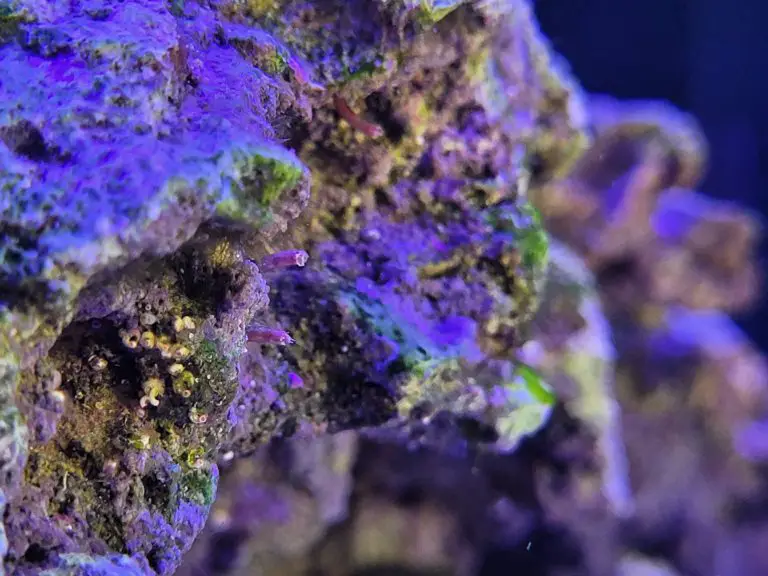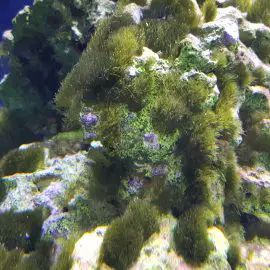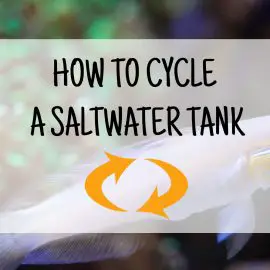How To Kill Vermetid Snails in a Saltwater Tank
It is possible to control or even kill Vermetid snails. The name Vermetid Snails doesn’t altogether marry up with our preconception of what snails are, but they have been classified as such due to their biological structure. In fact, the only time they may resemble what we think of as ‘snails’ is when they are microscopic juveniles, leaving the safety of their mothers calcified tube looking for their own spot to adhere to. It only takes them an hour before they start constructing their own tubes, and unfortunately it happens en masse.

Are Vermetid snails bad for a reef tank?
Unfortunately for us, being an immobile creature, Vermetid snails have developed a way to snare passing food from their tube. The foot of the Vermetid snail (which a conventional snail would glide on) sends a mucus web out into the water column in which to catch its prey. It is this mucus web that is one of the major problems associated with them.
The mucus web tends to irritate corals around it. This leads to corals closing polyps or withdrawing completely, or in the case of SPS corals it can cause RTN (rapid tissue necrosis). If the offending Vermetid isn’t dealt with it has the potential to kill off any coral in the vicinity of its web.
The secondary problem associated with these snails are their actual tubes. Not only can they become numerous if left unchecked which is in itself can become unsightly, but corals are unable to grow over or cover them. As the coral grows or bases out, the Vermetid builds its tube longer and longer preventing the entrance from closing. This can result in malformed corals.
Not only are the tubes disruptive in the growth of corals, but they are very sharp to handle. When you have tubes protruding from rockwork it makes handling the rocks a safety hazard. They can literally pierce your fingers as a larger needle would do!
Where do Vermetid snails come from?
Vermetids are hitchhikers. They can be introduced on live rock, snail shells and coral frag plugs. You can be as vigilant as possible and still miss them when they are not fully formed. Unfortunately coral dips do not kill them either.
I used to be Vermetid snail free. That is until I introduced a turbo snail with this ‘cute’ tube growing from it. If I had realised at the time what it was I would have removed it. This singular tube resulted in hundreds of Vermetid tubes appearing all over my rockwork, but generally inside holes and under the rock face.
This is one reason I quarantine everything before it goes into my system now. All new snails have a wire brush taken to their shells before they are introduced into my tank.
Just starting out in the saltwater hobby? Get your copy of How To Set Up A Successful Saltwater Aquarium ebook today.
This ebook will help to guide you past the mistakes I have made over the years.
What eats Vermetid snails?
Although several wrasse have been reported to kill Vermetid snails it comes down the individual fish and its food preference. One Yellow Coris Wrasse might love them, while another will not touch them.
Bumblebee Snails are carnivorous predatory snails which are reef safe, and have been known to snack on them too. The problem is that Vermetids are prolific, spreading rapidly. Bumblebee snails on the other hand are quite chilled and in no rush to do your bidding.
Any addition to a reef tank for biological control is normally a 50/50 bet. Sometimes it works and sometimes it doesn’t.
How to manually remove Vermetid snails from a saltwater tank
The most effective method of manual removal of this pest is using a pair of needle nose pliers and a flat head screwdriver. Both are guaranteed to kill Vermetid snails and both can be used to get into the cracks and crevices where they reside. You literally squash then with force. It is not good enough just breaking the tube alone. You have to squash the base of the tube where the snail will have retreated to.
Although this will make to feel like you have done something positive towards the removal, you will never be able to access every tube in a saltwater tank without going to extreme measures and removing the rocks (which is not something I suggest).

How to control Vermetid snails in a reef tank
Having read through all of the above, you may have figured out by now that they may be there to stay. But don’t let this freak you out. It isn’t always going to be as bad as the first infestation, unless of course you are very unlucky.
First things first. Understand that the hundreds you have suddenly found in your tank would have probably come from a singular Vermetid. The good news is that Vermetid snails are self-regulating. In a nut shell, if there isn’t enough food to go around, they will starve. Of the hundreds of tubes you have seen popping up everywhere many of them will die because of lack of food – unless you are feeding far too much. But we need to help them along:
- Only feed your fish what they can eat in 30 seconds. By doing this you will be ensuring the food is gone before the mucus nets can be deployed.
- Try not to feed corals with a broadcast food. This will be sure to get the Vermetid population going.
How to kill Vermetid snails with Calcium carbonate
Calcium carbonate is better known as chalk. The same chalk used on a blackboard. Above I said that Vermetid may be there to stay, however this method of eradication has worked for my tank and many other reefers. It still is not a 100% solution for some, but it is nonetheless worth a try. A number of years ago a member of R2R found that by using Coral Snow regularly he had the unexpected result of Vermetid snails dying off.
Also on R2R, a later post described how to make your own DIY Coral Snow using calcium carbonate. Coral Snow is sold as a method to bring clarity to your tank. It works by binding organics to the calcium carbonate, which then gets skimmed out of your system. It keeps water sparkling clean and is completely harmless in a reef tank. When you add it to your display it turns the water an opaque cloudy color.
The inset video below features an interview with Mike Paletta discussing how he manages the vermetid snail population in his tank. Skip to 35 minutes in to listen to what he has to say.
You will need to purchase food grade or high chemical purity calcium carbonate as shown below in the amazon link below.
In a container add 250ml of RODI water and 115ml of the powder to the water. Mix these thoroughly together. You will notice they will separate so will need to be well shaken prior to dosing.
To treat, you will need to entice the Vermetids to extend their mucus nets. I have found the simplest way to do this as Mike suggested is to use a turkey baster on the rocks, dislodging settled detritus while the flow is turned off. As soon as they detect the ‘food’ in the water they will extend their mucus. Be ready to add the calcium carbonate mix and turn the flow back on to distribute the ‘snow’.
Add 1ml per 100L (25 gallons)
You will notice as you watch that the mucus nets become increasingly white as the chalk adheres to them. Yes, all they catch is chalk. I’ve watched this happen and cannot decide if they die because they draw the chalk in and it clogs up their tube, or the mucus net gets too heavy to retract and they starve because they have not drawn any food in.
You cannot eradicate them after a single treatment. To control these things your have to be dedicated, and as Mike suggested, treat the tank every day for a month. This will choke up the majority of the tubes, but never rid of them in your tank completely. You may need to do the same in 3 months, or 6 months, again.
- High Quality Food Grade Calcium Carbonate White Powder, Made from Limestone
- Safe for Human Consumption & For use with Foods!
- May be used as a calcium dietary supplement!
My Experience
I have had Vermetid snails for more than a year now. My initial reaction was horror and to throw everything at them. I have learned to live with them, as horrible as they are. If I have an encrusting coral growing over the tubes, I break the tubes away to allow the coral to take residence.
The only true route to ridding my system of them, would be to empty it all out and start again. However, with coral becoming more of a feature as it grows, I tend not to take so much notice of them anymore. They are simply a background inconvenience.
Conclusion
Keeping saltwater tanks can become a minefield when it comes to hitchhikers. Thankfully, it is possible to kill Vermetid snails, or at the very least keep them under control. Remember to keep your water as clear as possible and remove them manually or with Calcium carbonate every chance you get.

Hi, my name is Craig.
I am the owner of The Salty Side.
Firstly, thank you for visiting us. If you have found this article to be informative, and you now have a better understanding of the topic, then my job is done.
If you are feeling charitable, and feel I deserve a little thank you, I thank you in advance for any support given.





